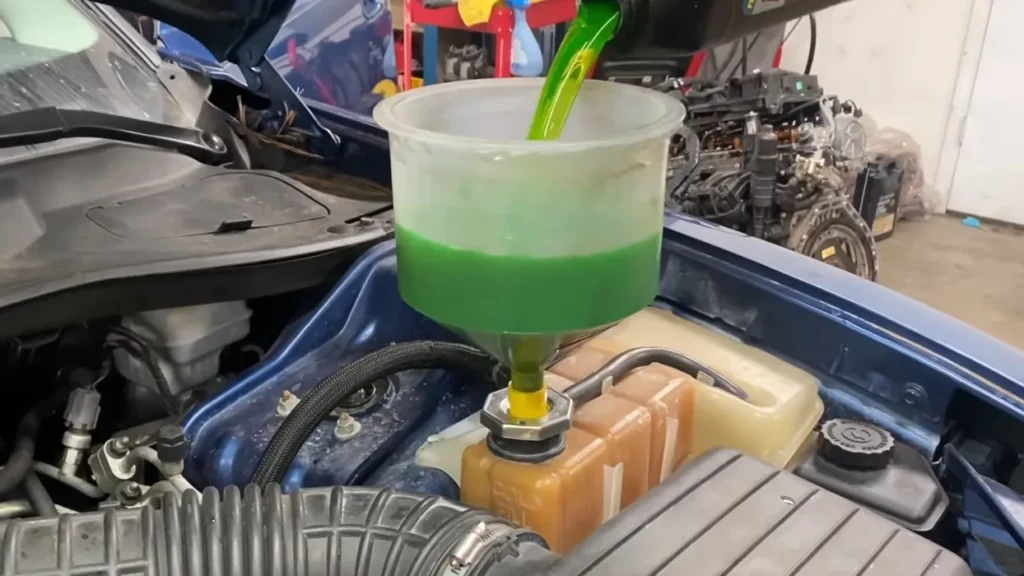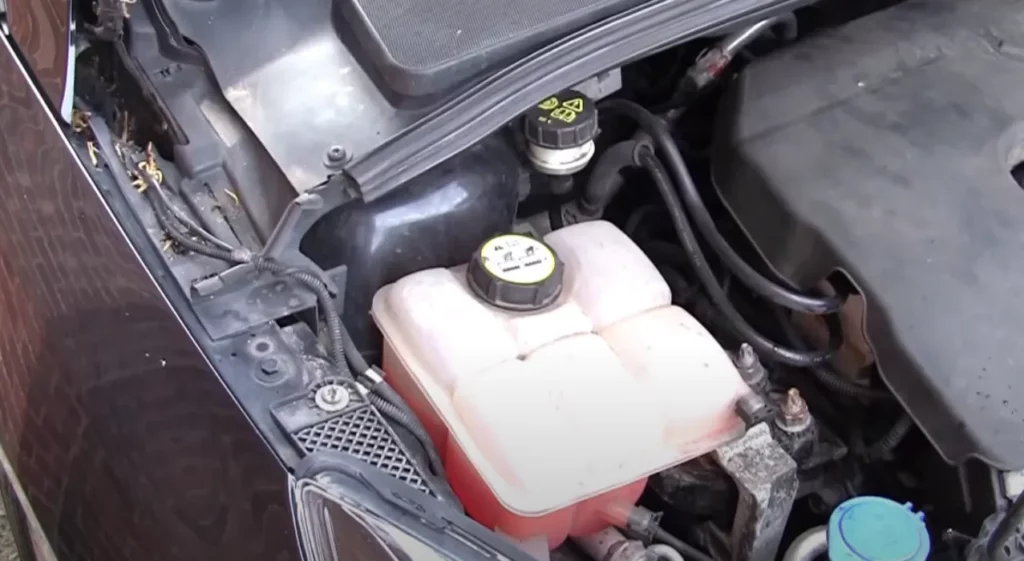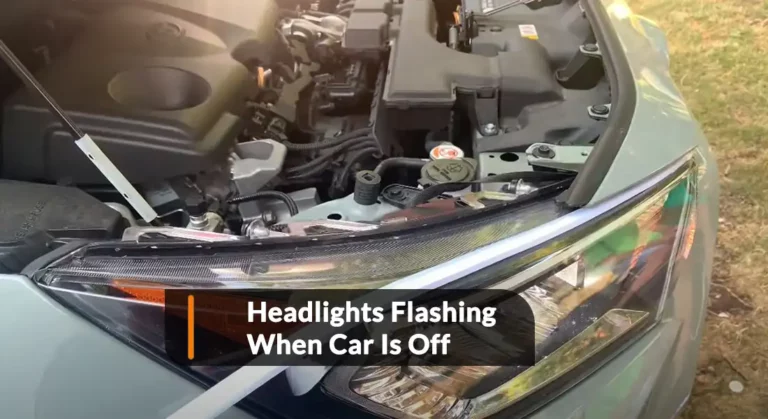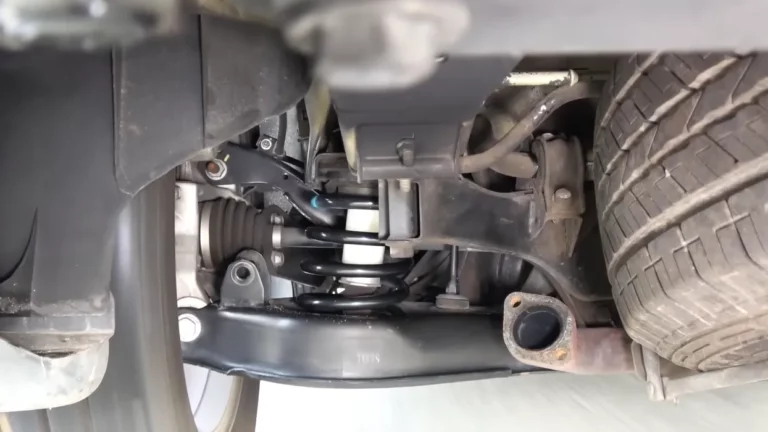What To Do After Putting Coolant In Car
You may think that your job is done after successfully adding coolant to your car, however, that’s not the case. To safeguard the smooth operation of your car’s cooling system, you have to take a few post-coolant filling steps.
Now, what to do after putting coolant in the car?
You need to stay alert and check for any signs of leakage, monitor the temperature gauge, check for excessive steam, unusual odors, and make sure the engine is operating at the right temperature.

How To Put Coolant in Your Car
In this section, we will provide you with a step-by-step guide on how to put coolant in your car.
Tools You’ll Require
You’ll require a few supplies when adding coolant to your vehicle, those are:
Antifreeze/Coolant Mixture
Make sure that you have selected the right type of antifreeze/coolant mixture as specified by the car manufacturer.
Gloves
Coolant is known to be poisonous to both humans and animals. To avoid skin irritation, we will recommend you wear gloves at all times when working with it.
Funnel
Keeping a funnel at hand is especially beneficial as it will help you to avoid spilling harmful chemicals.
Wiping Cloth
Be sure to keep a wiping cloth near you so you can immediately clean up any drips or spills.
Owner’s Manual
Having the owner’s manual around can help make the entire process faster and smoother. This is because it’ll guide you to find the coolant reservoir and provide detailed tips that are specific to your vehicle’s requirements.
Step-by-Step Guide
Go through the following guide carefully and do follow every step to ensure successful completion of the procedure:
1. Cool The Engine
After parking your car on a level surface and turning off the engine, give it about 15-30 minutes to allow the engine to cool off completely.
2. Locate The Coolant Reservoir
Open your car’s hood and locate the reservoir. It is usually placed near the radiator and is a container made up of translucent plastic. If you face difficulties to find it, go through the owner’s manual for reference.
3. Open The Coolant Cap
After you’ve located the reservoir, remove the coolant reservoir cap. Do make sure that the area is cool before proceeding.

Attempting to remove the cap before the area is completely cool could result in pressurized gas or hot liquid forcefully escaping, which could result in severe burns.
4. Check Coolant Level
You will find two markings on the side of the reservoir that says minimum and maximum. If it isn’t below the maximum, you won’t have to refill it.
5. Drain The Old Coolant If Required
In most cases, coolant is refilled once the level is low and doesn’t require you to drain the old one. However, if you think the old coolant doesn’t have the required water-to-antifreeze ratio or is contaminated, then you have to drain it.
To drain the old coolant, follow the steps given below:
- Use jack stands to safely raise and support the front of your car.
- Remove the radiator cap or pressure cap and position a drain pan below.
- Find and unscrew the drain cock based on your car’s specific type.
- It’s a good idea to buy a replacement drain cock just in case.
- Take off the engine hose and loosen the radiator hose clamp.
- Consider using hose-clamp piers for easier removal of spring-style clamps.
- Completely drain the old coolant into the drain pan.
- Reconnect and secure the radiator hose, and carefully replace the drain cock.
6. (Optional) Make Your Coolant Mixture
Coolant is essentially a mixture of antifreeze and water. If you couldn’t get your hands on ready-made coolant, then you make your own quite easily.
For most cars, the ratio of antifreeze to water should be 50:50, however, depending on the temperature, it could be 70:30.
The safest option is to follow the owner’s manual to find the ideal ratio for your vehicle and make it accordingly.
If you ask us, it’s better to make your own coolant rather than buy ready-made universal coolants as it can trigger premature component failure.
7. Pour In The Coolant Mixture
Carefully pour the coolant mixture into the reservoir with the help of the funnel. Keep pouring until you it reaches a few inches below the maximum mark. Be careful to not over-pour so avoid the chances of spills.
8. Close The Reservoir
Make sure to tightly close the cap to prevent chances of leaks.
Related Post: Can You Use Water Instead of Coolant in the Summer?
What To Do After Putting Coolant in Your Car
There are a few steps to take after you put coolant in your car, those are:
1. Check for Leaks
It’s easier to check for leaks in the radiator after you’ve poured in the new mixture. Carefully keep an eye out on the reservoir and all the coolant tubes to check for leaks. If you find any component to be damaged, floppy, or puffy then replace them right away.
2. Do A Bit Of Waiting
Wait for 15 minutes after you put in the new coolant, then start the vehicle’s engine and allow it to sit idle for a few moments.
This will enable the coolant to flow throughout the system, eliminating any air pockets. Monitor the temperature gauge to ensure it stays within the acceptable range.
3. Check for Overheating
Drive the car for about 2-3 miles and be vigilant for any signs of overheating, such as excessive steam, unusual odors, or a sudden rise in the temperature gauge. If any of these indications are observed, immediately turn off the engine and seek professional help.
4. Check Coolant Level
Once the engine has reached its regular operating temperature, reevaluate the coolant level in the reservoir. Confirm that the coolant rests between the minimum and maximum indicators. If necessary, add more coolant to maintain the appropriate level.
Related Post: Coolant Reservoir Boiling, But Engine Doesn’t Overheat? Causes & Solutions
Frequently Asked Questions [FAQs]
What is the ideal temperature for the coolant in my car?
Most cars process the coolant temperature between 160 F and 225 F.
What happens if I use the wrong type of coolant?
Selecting the incorrect coolant may result in damaging the engine and the internal cooling system components. This is because the coolant ingredients may clash with the materials used for your car’s engine.
Can I put coolant in my car when it’s running?
You can do this if you’re using a modern car. However, we will recommend against it as the hot engine and reservoir may injure you in the process.
Related Post: Rusty Coolant Explained!




